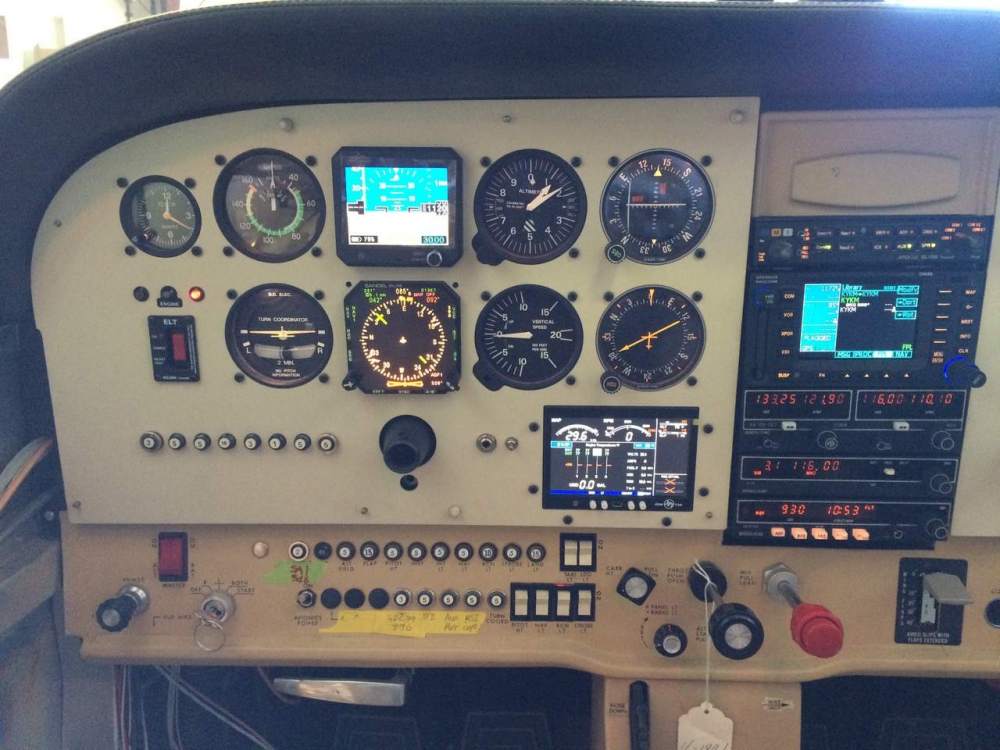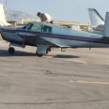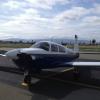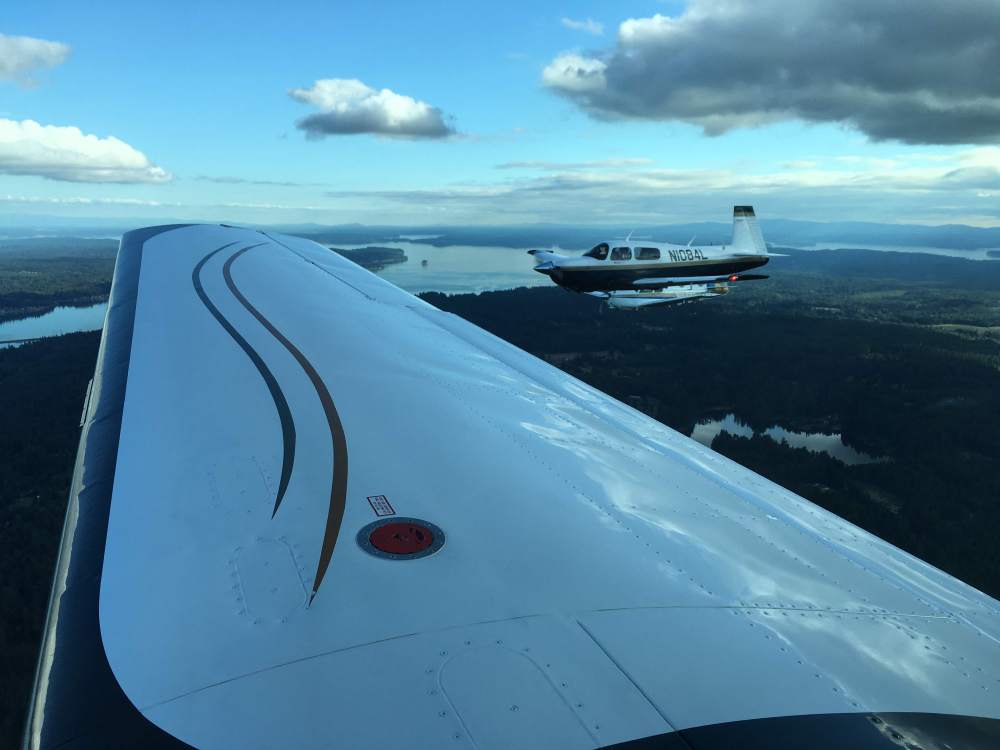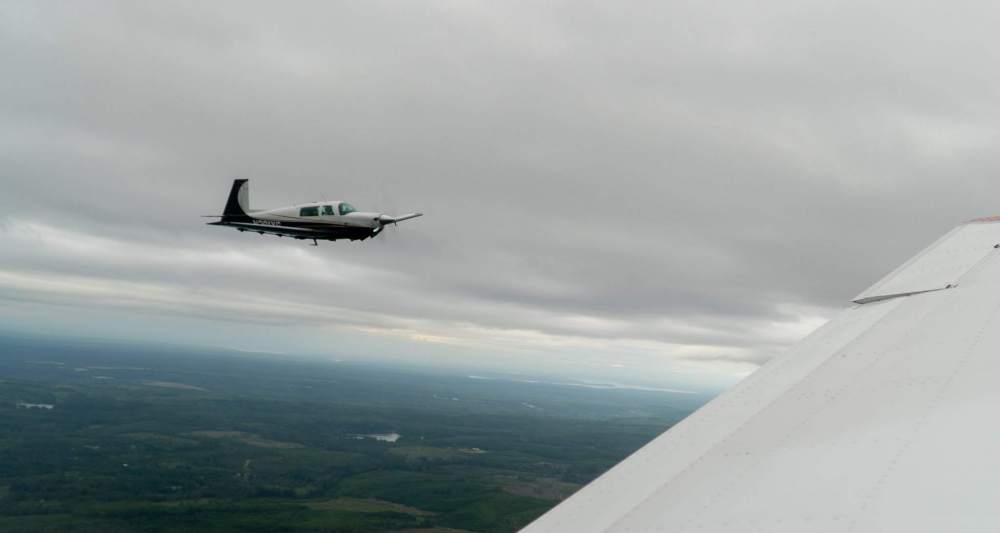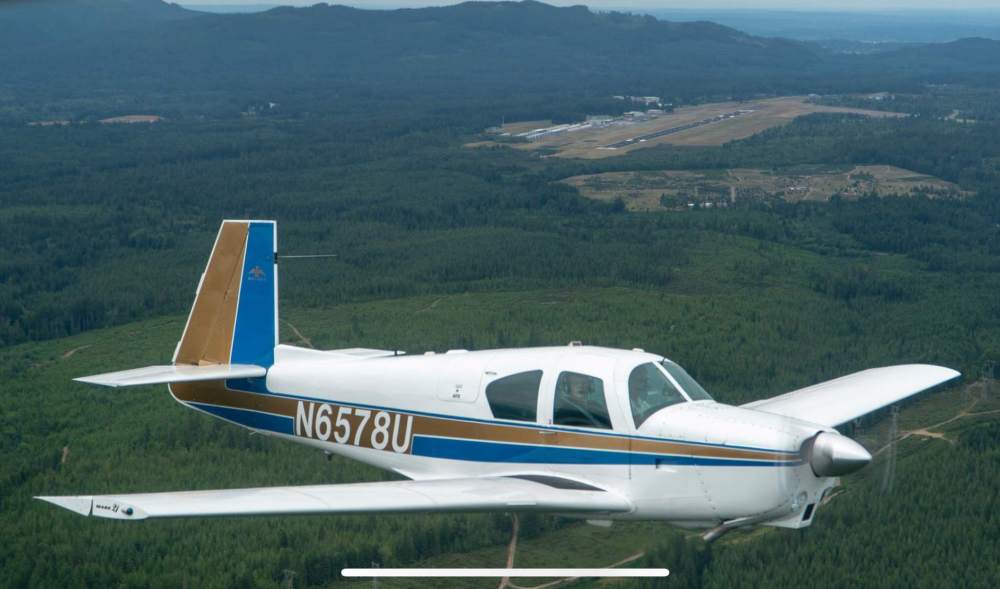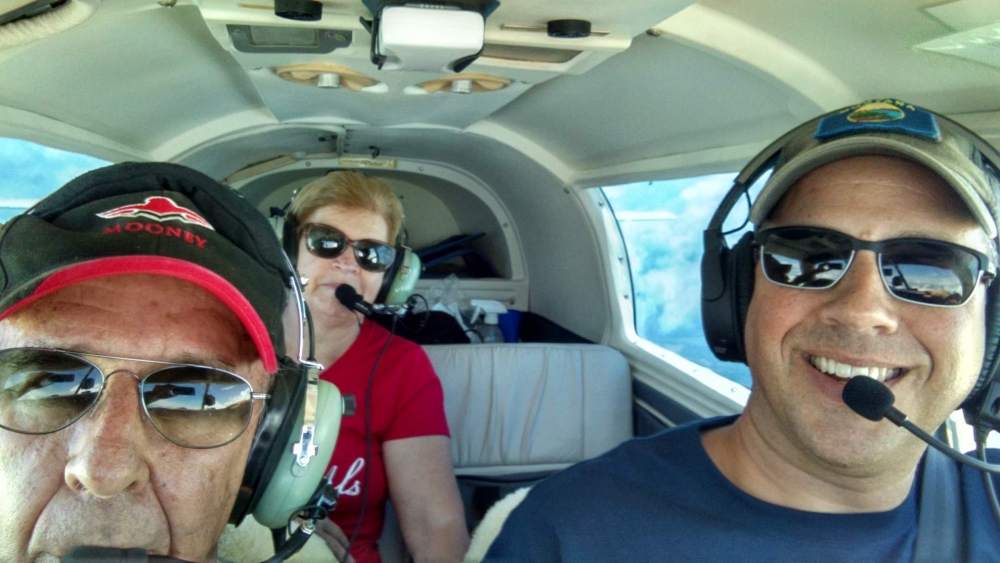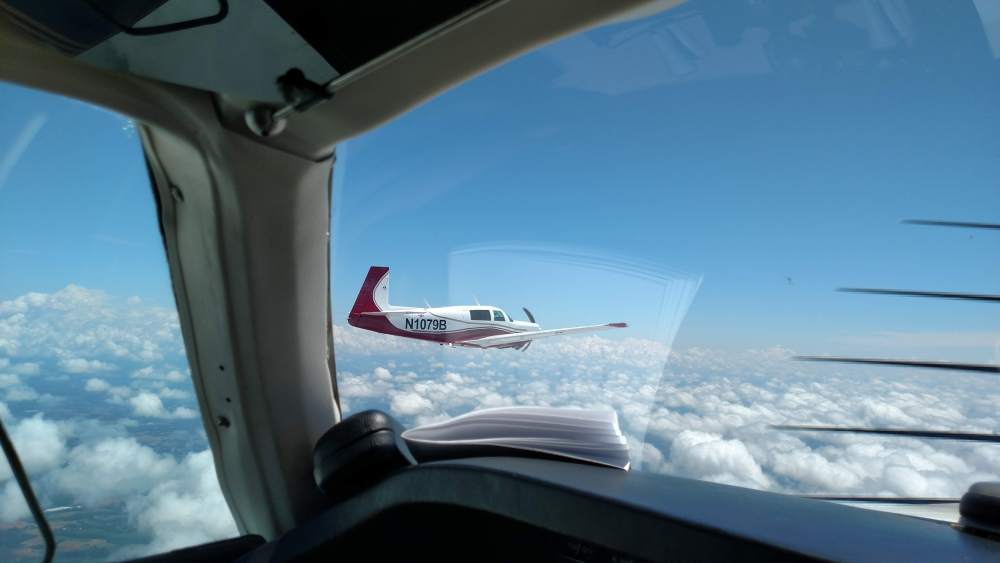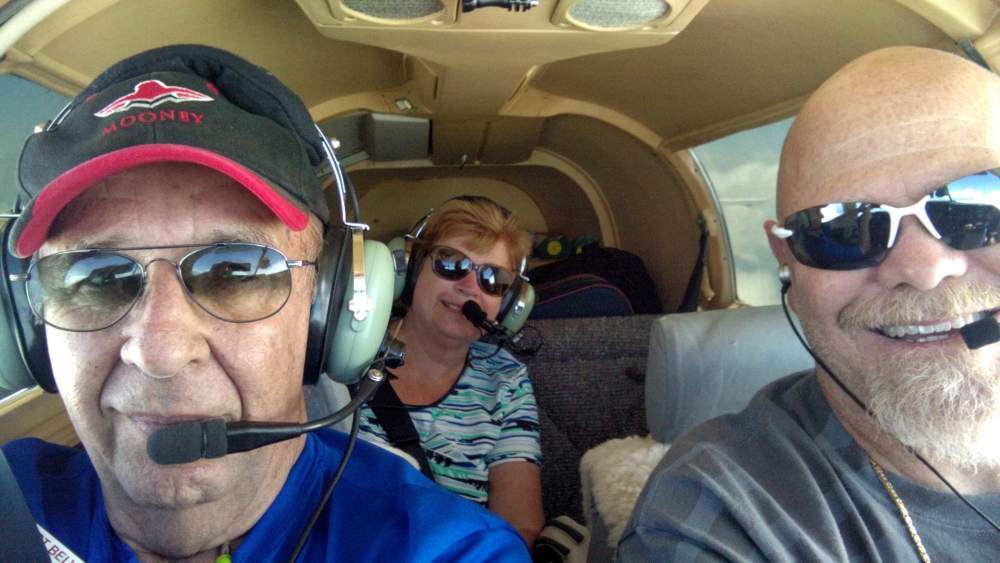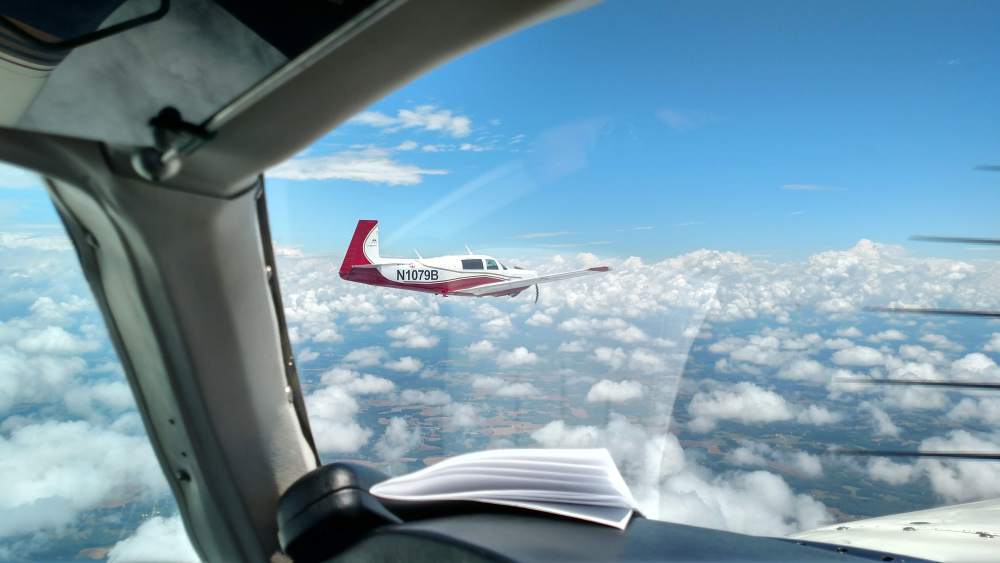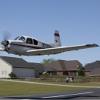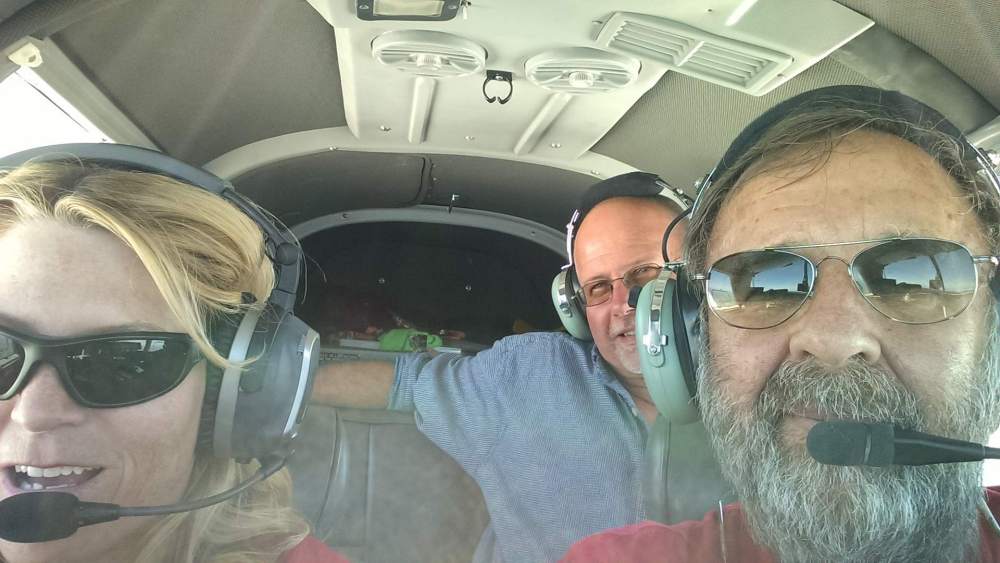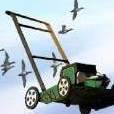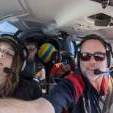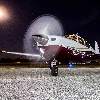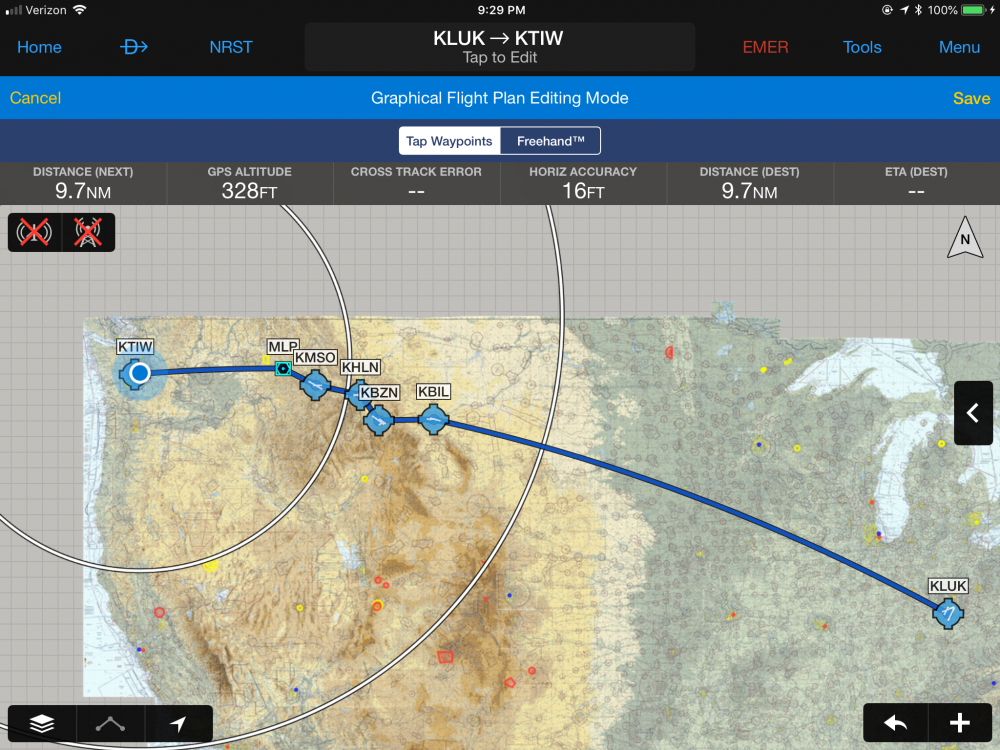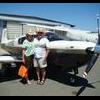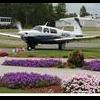Leaderboard
Popular Content
Showing content with the highest reputation on 06/24/2018 in all areas
-
I'm sorry, but I'm really having trouble seeing the problem. Like @RLCarter, I just power up my EFB and open the apps I want at the beginning of a flight, exactly the same way I would make sure my charts, approach binders, kneeboard, and pencil were all accessible in the paper days. I also put it in sleep mode when I'm not actively using it and it's one button press to bring it all back. But perhaps we are starting from different assumptions, so I'm not understanding what you are getting at. My EFB, for all its bells and whistles, is ultimately an electronic chart and information reference. It's not a primary navigation and attitude reference. I have certified instruments and avionics for that. Are you using it in a different way? Edit: Rereading, I see your concern is emergency backup. Even then, since it is powered up and available, it's just two presses to get there. One to wake up the tablet; two to touch the button which brings up the HSI/instrument page. Maybe two more if you moved the EFB to the background before sleeping it. If that's to much time, my skills need a workout!3 points
-
3 points
-
Well If you are trying to say it is ok to enter the hold from the less protected side you are technically correct so long as you stay primarily within the protected airspace. Respectfully that is a thin argument when it comes to the AIM and does a disservice to those who might think it Ok to enter a hold or course reversal anyway they please. Specifically 5.4.9-1states “ “ Racetrack entries should be conducted on the maneuvering side where the majority of protected airspace resides. If an entry places the pilot on the non−maneuvering side of the PT, correction to intercept the outbound course ensures remaining within protected airspace”. As well as my previous AIM reference “The only restriction is that it must be done within the limits specified on the profile view and “it must be done on the protected side of the course” My original post regarding the anomaly of the GTN indicating a teardrop entry on the non protected side promted Garry’s response. As a practicle matter pilots fly the inbound course from the fix outbound prior to course reversal so very little entry into the non holding space occurs which is shown on your diagram and is what happened in the approach I referenced. To be clear one should always fly on the protected side. One dosen’t get to “choose” wheather or not to execute the procedure turn in the less protected airspace. Hopefully you agree.2 points
-
No disrespect, but have you tried it? You are correct, there's less than $100 worth of 2024-T3 in a panel, its all in the CAD and machine time. And then some more for painting and labelling. I've got about 40-50 hours into my Mooney panel drawing alone, and thats using a good library of 'shapes' for things like HSI's, altimeters etc. Then at least 5 trial runs on a CNC machine before I had a panel that met my standards. Iterations are required to catch errors, make major layout changes when things don't look right, make minor changes to get instruments, switches and screws to fit. And of course check that it fits into the airplane without interference. Add in finding a 120t press to bend the bottom edge with a 1/2" radius. Then finding a good paint and primer system. I haven't even got to engraving the lables yet, but the closer you get to completion, the more time and cost you have in the panel, and good luck in getting the local engraving shop to get it right the first time. Aerodon2 points
-
The GTN commands the GPSS, not the other way around. This error is in the GTN's algorithms. I cannot fathom why heading vs track might be used in the calculation, but that could account for it. Just guessing of course, its on Garmin to resolve.2 points
-
One of the issues I’ve noted over time with both recurrent training and new IFR Pilots is an over reliance on the technology which at times adds confusion to the task. Simply put it makes little difference which entry one chooses as long as it is done on the correct (holding) side of the pattern. Recently I flew the LPV approach from the hold in CapeMay WWD to Runway 19 with GPSS. The GTN commanded an entry on the non holding side which I ignored and disconnected the autopilot. Why did it do that? I don’t know. Maybe it was not set up correctly or maybe it was a glitch. It made no difference as I knew well before the entry what I intended to do. I refused to be distracted by something that was supposed to be helpful but was confusing and adding to the workload and stress. Once I entered the turn it decided to do what I’d expected and all was good and I reengaged the GPSS. Remember the Basics Fly the airplane, Navigate and Communicate. Don’t trust the autopilot. Simple is always best. Back in the day my favorite instrument was the ADF. Whenever I was worried about where I was or what I would do that single needle pointed to a Nav. Today we have multiple maps and presentations which at times do not agree so we spend increasing amounts of time attempting to sync these and not fly the AC. With students I often take away most of these to help them get back to.basics. Fly the AC and navigate. You are the pilot. You did well.2 points
-
The tie down that LASAR sells is 45.00 for the set. You get the tie downs and the jack points for both sides.2 points
-
You would have to wire this a bit differently. The way it is now will not work well. There is a solenoid with a pretty heavy draw that will mess with the battery minder logic. It is best to wire a little molex plug in parallel with the airplane battery. Don’t use the existing power plug and don’t use the parallel battery.2 points
-
2 points
-
1 point
-
I noticed that Nancy was happier flying with @Marcopolothan when he was on the wing!1 point
-
1 point
-
Thanks Chris - I did see the waypoints were in the flight plan so should not have worried so much. Going forward I'm going to load approaches with one of the IAFs rather than vectors, whether I've been given a fix to join at or not. If I get an intermediate fix, I can just select that fix and hit direct. If I get a different IAF, its easy to go back and swap to reload with that fix as long as I haven't activated the approach yet. If I get vectors, its easy to hit the name of the approach in the flight plan and activate vectors even if I loaded with an IAF. But it's clearly not wise to activate vectors unless it's abundantly clear I'm being vectored onto the course rather than sent to a fix. This stuff is not so intuitive sometimes! I have another burning question for you regarding how I'm tripped up on VTF with the GTN 650, but I'll maybe start a new thread rather than continuing to hijack this one.1 point
-
The GTN gives annunciations of what it’s going to do about 8 seconds before it does any turns, FWIW.1 point
-
1 point
-
1 point
-
I would be interested in hearing more about Garry’s information. Those of us taught years ago, it was drilled into us that the protected side was the side to fly any procedure turn. Heck, even John and Martha King drilled that into my head Sent from my iPad using Tapatalk Pro1 point
-
Over the years, I have tried several techniques to keep the brake fluid bright and shiny. What seems to work well for the hangar elves is, each year, to just drain a few ounces of fluid from each caliper and then refill the reservoir.1 point
-
<Knock on wood, but for the grace of ....> In the past this poor J seems to have been cursed by forgetful pilots, one of whom was not a very creative fibber. The a/c history on aviationdb.net is an interesting read.1 point
-
I don't really see the problem either. Start the app before you start the engine on the ground. That's what I do with Garmin Pilot on my Samsung. The tablet will run about 3 or 4 hours on battery. If I'm going to be flying more than that I plug it into the charger to keep it charged.1 point
-
Hmm, maybe the nutplates were stripped and someone got lazy? I don't know if Mooney changed the design on that. If you have someone drill those out, take a razor blade around them first to cut the paint. Some shops have cutter sets that are made to cut the paint around inspection panel screws that were painted over.1 point
-
Put your checklist in Foreflight or whatever app you use. Then if you use the checklist, the app is open. You can set it up to stay on continuously or go into sleep mode and comes back to life with a touch of a button. I close all other apps at startup while using Foreflight or the IFD 100 app.1 point
-
DM, you might to update your avatar data... Listing your model of AC would be helpful... to the people that want to help you... Best regards, -a-1 point
-
I spent the better part of a year getting my built-in o2 system to hold pressure. My system would leak down over several days when the valve was shut. Sometimes it would leak down to 600 psi and hold, other times 500 psi or 300 psi. There were several problems, and every time I found an fixed one I thought I had it, but did not. Broken push-pull cable at cabin knob. Leaky fitting at oxygen fill port. Old o-ring where fill port tube connects to regulator. Shutoff valve leak, valve did not fully shut off when the lever was in the shutoff position. #4 was finally fixed by a valve overhaul at c-l-aero in Redding. 1 week total turn-around including shipping, $600. Your system has 2 regulators. There is a combination first-stage regulator in the same body as the shutoff valve. This drops the tank pressure to 125 psi or so. Then there is the altitude compensating regulator as a 2nd stage regulator. If you send the whole tank/regulator setup to c-l-aero they will fully test it including putting the altitude compensating regulator in an altitude chamber and test that it meets specs at the range of altitudes. I found #2 in the list with the blue leak detector fluid mentioned above. Fixed with new Swaglok fitting. Somebody prior to me had over-tightened it and crushed the insides of the compression fitting. #3 was just done because the o-ring was old and cheap. I never did prove there was or was not a problem here. I found #4 when I had the idea to connect a temporary tube to the output of the altitude compensating regulator and put the other end in a water bottle. I saw steady bubbles coming out even when the valve was shut. My MSC didn't really believe me that this was the issue, having never seen that particular fail before. Jeff at c-l-aero wasn't sure either, but was willing to overhaul the valve. I was pretty confident in the test so sent the whole tank and regulator setup up to Redding. They verified my diagnosis (valve did not shut off fully) and the overhaul fixed it. I am now finally leak-free. This one drove me crazy because I could not find it with the leak detect fluid. In your case I would suspect one of the unused passenger o2 supply ports. And the altitude compensating regulator will have a higher pressure at altitude, so it is entirely possible that one of these ports will leak more at altitude than on the ground. Perhaps you could fly and have a passenger spray the leak detection fluid around at altitude? Or you could be correct that you have a leak when it is cold but not otherwise. Or, perhaps your pilot breathing setup is flowing way too much, more than you expect. Larry1 point
-
Power up your favorite portable device and app and leave it running, I turn on my iPad and start WingX on every flight, I put the iPad on sleep mode if I don't need it, saves battery even though it's running in the background1 point
-
I’ve been using albums on iOS. It is the only way I find to keep the pictures in some sense of order. Apple’s picture management isn’t the greatest. Sent from my iPhone using Tapatalk Pro1 point
-
If I post from my PC, half the time they are rotated. Someone once said it was due to whether the photo was landscape or portrait mode. Not sure. If I post pictures, I usually do it through Tapatalk and they come out right. If you want to edit the orientation, I use an iOS app called Photo Editor+. Sent from my iPhone using Tapatalk Pro1 point
-
Are you going to make a new panel yourself? It can be done. A free copy of Solidworks with your EAA membership. Draw it in Solidworks. Make a mockup during the process in clear plexiglass. Take the Solidworks file to a metal shop with a water jet cutter. Take the cut panel to a laser engraving shop (trophies, etc.) and get the labels etched into the panel. Paint. Install it. Do it yourself for probably $100.1 point
-
There are a couple of other threads with various set-ups for various configurations.1 point
-
1 point
-
1 point
-
Can't help you with rotation [@Marauder is our expert on that], but putting photos in order is easy. Upload them, scroll back into your post and put the cursor where you want the first photo. Then scroll back to the pictures and hit the "+" on the picture that you want there. Repeat for each photo. That should handle both picture order and location in the post. I generally put a blank line before and after each picture. As for wiring in the battery minder, I don't use one on my Concorde battery. My first one "only" lasted 6½ years. So far, I'm almost 2 years into its replacement, and she cranks up strong and fast.1 point
-
Dev - the key is to stay on the protected side of the procedure turn. I always give myself an “expected” heading for the procedure turn during my approach brief so when the GPS does it thing I can recognize the surprise if it happens. Sent from my iPhone using Tapatalk Pro1 point
-
Because I was flying too good and he had to get me to where I wasn’t flying so good. He has actually been one of my best friends for 30 years. We have been screwing with each other the whole time. And the last time he gave me a BFR he pulled out the commercial PTS and gave me a commercial check ride. It’s all good, it never hurts to be challenged once in a while.1 point
-
Since I generally prefer teardrop to parallel when it's close, I sometimes disregard the GPS recommendation. If I am using GPSS coupled, I just let it do what it wants.1 point
-
1 point
-
1 point
-
1 point
-
You can buy two of the LASAR combination tie down ring and jack point thingies . . . .1 point
-
As some others have said I think a J is the best bet for you. I have owned mine for 8 years and 1000hrs and routinly fly to Mammoth, Vegas to Napa over the Mts, and make 1-2 trips to the Bahamas every year. My brother use to live in Denver and I would go visit once a month. The route i settleled on was over the southern Rockies through Laveta Pass then north over Colorado Springs. I would cross around 14k with no prob at all even with high density altitudes. I love my J and after new paint, interior, engine, prop ADSB it’s time for something bigger with two engines. It always happens right when you get an aircraft dialed in. Anyway i am based at VGT and if I can make a deal work on a 310R it may be for sale in a month or so. PM me your info if you are interested and we can chat. I have had very little surprises over the years and all the big ticket items were expected. The J is a great aircraft with good all around performance that is easy on the wallet.1 point
-
Calling him names will only provoke a response in the manner you don't want to see . . . . If no one quotes his response, I won't see it, courtesy of the "Ignore User" feature. Ya'll fly safe out there! P.S.--for an expected gear up landing, I'll take asphalt or concrete over uneven grassy soil of unknown consistency where my lower prop blade(s), carb chin, fixed step, belly beacon, flap hinges, etc., may dig in, affecting my track across the ground and increase sheet metal damage through stuck pieces folding back, breaking off and / or wrenching their supporting structure.1 point
-
Someone asked that question in my college flying club in Texas when we had a "ground school" session for those interested in checking out in our F model Mooney.... "Where is the best place to land a Mooney if you can't get the gear down?" Answer: "Kerrville" Sent from my LG-US996 using Tapatalk1 point
-
I also have the Hartzell H-1. I called a couple of shops over the country and they said no one really carries parts kits for them anymore. Then I called the place that most recently overhauled mine in 2005 (Air Prop Specialists in Marianna, FL). They had parts for it. Mine was also leaking from the seal. Put the prop in low RPM and would not go back. I found that on cycling the prop at run-up. So I shut the engine down and towed it back. Blades were at full coarse pitch. I cleaned out the oil, removed the governor and send it off. I told them to do an IRAN instead of an overhaul. They send it back a week later with new seals all around. They commented everything else was in spec (perfect reason NOT to do an overhaul). I think total price, shipping both ways, parts and labor was $550. To overhaul would have been $1,300 to replace perfectly good parts.1 point
-
If you’re flying IFR, the minimum altitudes will keep you clear of mountains unless you are way off on altitude or course. Although I still prefer VFR, I like the view.1 point
-
1 point
-
Hi my name is Charles and I can't stop buying new avionics for my Mooney1 point
-
1 point
-
Ever wonder how Boeing produces over FORTY 737 airplanes a month? A train arrives with the main body in the morning. They turn them out about one every 18 hours and every part is supplied by the lowest cost supplier. https://nam02.safelinks.protection.outlook.com/?url=https%3A%2F%2Fwww.youtube.com%2Fembed%2FSE71NJl-naY%3Fautoplay%3D1&data=02|01||27da532443a1428f705e08d56517a855|84df9e7fe9f640afb435aaaaaaaaaaaa|1|0|636526074642617895&sdata=EJNiqsyD%2FTgtUX8pf3AnyUide11bkQ814%2BbJxvNgw5s%3D&reserved=01 point
-
Same technique I've been using for a loooooong time, Mike. In fact, I may have taught it to Dmax FlyDave's new technique is interesting but I don't understand what moving the throttle full forward and holding it there accomplishes. All that does is change the position of the air flow control in the throttle body. If the engine is not cranking, there is no airflow therefore nothing happening by holding it full forward. The procedure with starting cranking at full forward moves a large volume of air to lean it to a starting mixture.1 point
-
Do you think this is really different than the standard procedure? With all the pushing and pulling you've put the throttle and mixture back where it was when you shut it down which is SOP.1 point



